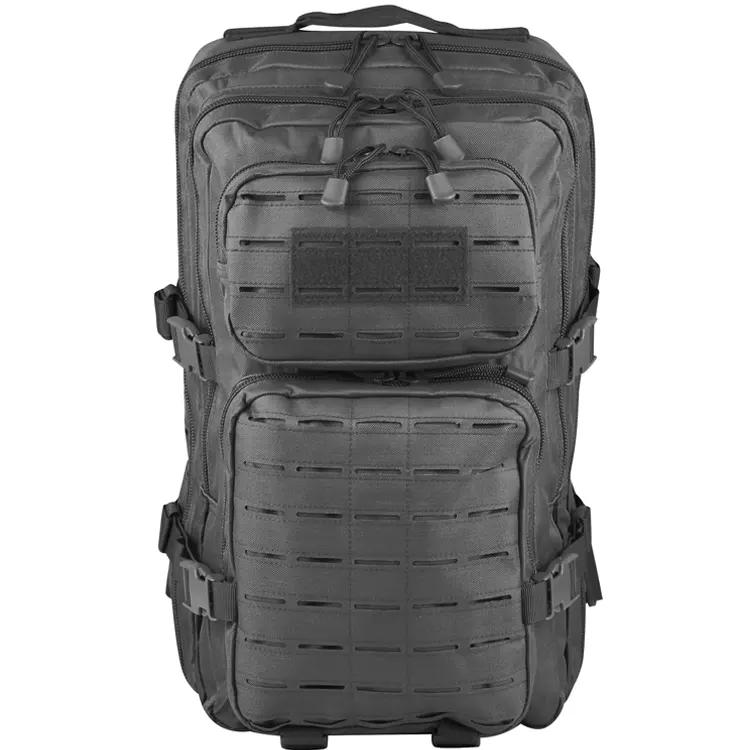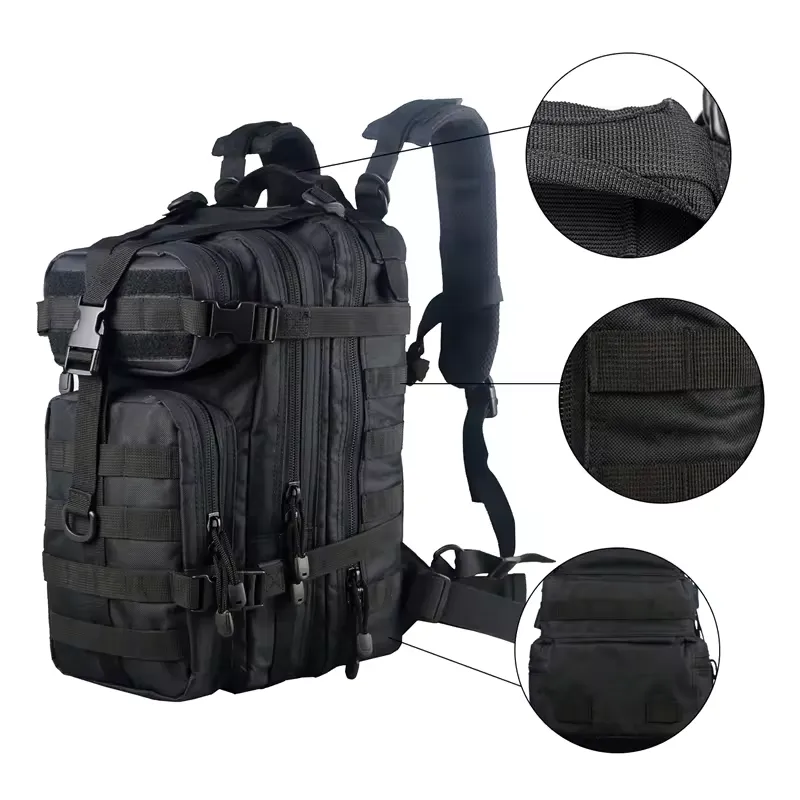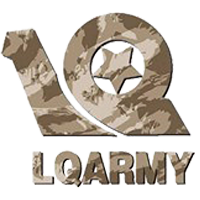An assault pack is a reliable backpack designed for demanding tasks, whether you’re in the military, law enforcement, or enjoying outdoor adventures. Choosing the right one depends on understanding your needs and the pack’s features.
This guide explains key factors to consider—size, MOLLE compatibility, hydration bladder integration, and weight distribution—and provides a buyer’s guide for different scenarios. We’ve also included a checklist to help you pick the best assault pack.
What is an Assault Pack?
An assault pack is a compact, durable backpack designed for military personnel to carry essential gear during short-duration missions, typically 24-72 hours. The term “assault” reflects its purpose: to support soldiers during rapid, offensive operations where mobility and efficiency are critical.
Unlike larger rucksacks meant for extended missions, assault packs prioritize lightweight design and quick access to mission-critical items like ammunition, medical supplies, water, and communication tools.


Key Features to Consider
When selecting an assault pack, focus on these four features to ensure it meets your mission requirements.
1. Size (Capacity)
Assault packs typically range from 20 to 40 liters. The size you need depends on how much gear you’ll carry and for how long.
- 20-25L packs: Best for short missions (1 day or less). They hold essentials like water, a first-aid kit, and small tools. Ideal for quick patrols or day hikes.
- 30-40L packs: Suited for multi-day missions (2-3 days). These can carry extra clothing, food, and equipment. Good for extended operations or weekend camping.
Choose a size based on your mission length and gear list. A pack that’s too small won’t hold everything, while one that’s too large adds unnecessary weight.
2. MOLLE Compatibility
MOLLE (Modular Lightweight Load-carrying Equipment) is a system of webbing that lets you attach pouches, holsters, or other gear to your pack. According to U.S. Army guidelines, MOLLE systems improve flexibility for soldiers by allowing customizable setups.
- Look for packs with strong MOLLE webbing on the front, sides, and straps.
- Ensure the stitching is durable enough to handle heavy attachments.
MOLLE compatibility is critical for military and tactical users who need to adapt their pack for specific tasks, like carrying extra magazines or medical kits. For civilians, it’s useful for attaching hiking or camping gear.
3. Hydration Bladder Integration
Many assault packs come with a compartment for a hydration bladder, which holds water and connects to a drinking tube for easy access. The Outdoor Industry Association notes that hydration systems are a top feature for active users.
- Check if the pack has a dedicated bladder pocket and tube routing (e.g., holes for the drinking tube).
- Confirm the bladder size it supports (usually 2-3 liters).
- If the pack doesn’t include a bladder, ensure it’s compatible with standard brands like CamelBak.
This feature is vital for long missions or hikes where stopping to drink from a bottle isn’t practical.
4. Weight Distribution
A good assault pack balances weight to reduce strain on your back and shoulders. Look for these design elements:
- Padded shoulder straps and a waist belt to spread weight evenly.
- A sternum strap stabilizes the pack.
- A breathable back panel to keep you cool.
Packs with adjustable straps let you customize the fit for comfort. For heavy loads, choose a pack with a reinforced frame or padding to support your spine.
Matching Assault Packs to Your Mission
Different missions require different assault packs. Here are three common scenarios, along with recommendations to help you choose. At LQ ARMY, we custom manufacture assault packs to meet these needs.
Scenario 1: Military Patrol
Needs: A 30-40L pack for 1-2 days, with MOLLE webbing for ammo pouches and radio holders. Hydration integration and strong weight distribution are key for long marches.
Recommendation: A 35L pack with full MOLLE coverage, a 3L hydration compartment, and padded straps.
Why It Works: The size supports multi-day gear, MOLLE allows customization, and hydration keeps soldiers ready.
Scenario 2: SWAT Operation
Needs: A compact 20-25L pack for quick missions (4-8 hours). MOLLE for attaching breaching tools or flashlights, plus a slim design for mobility in tight spaces.
Recommendation: A 20L pack with side MOLLE panels and a low-profile shape. Our army assault backpack offers quick-access pockets and a hydration-ready design for fast-paced operations.
Why It Works: The smaller size ensures agility, while MOLLE supports tactical gear.
Scenario 3: Weekend Hiking
Needs: A 25-30L pack for 1-2 days, with room for food, water, and a sleeping bag. Hydration integration and comfort are priorities for long trails.
Recommendation: A 30L pack with a hydration bladder pocket and breathable padding. Example: Sac à dos d'assaut 3 jours
Why It Works: It balances capacity and comfort for outdoor adventures.
Checklist: Evaluate Your Assault Pack Needs
Use this checklist to narrow down your options and find the right pack:
- Mission Duration: How long will you use the pack? (e.g., hours, 1 day, 2-3 days)
- Capacité: Do you need 20L, 30L, or 40L to carry your gear?
- MOLLE: Will you attach extra pouches or tools? (Yes/No)
- Hydration: Do you need a bladder compartment for water? (Yes/No)
- Confort: Are padded straps and a waist belt important for your load? (Yes/No)
- Environnement: Will you face rain, heat, or rough terrain? (List conditions)
- Budget: What’s your price range for a quality pack?
Review your answers to match the pack’s features to your mission.
Why Choose a Custom Assault Pack?
Au LQ ARMY, we’ve spent over 15 years designing and manufacturing tactical gear for professionals and outdoor enthusiasts. Our custom assault packs are tailored to your exact needs—whether it’s a specific size, unique MOLLE layout, or specialized materials. We use durable fabrics like Cordura nylon and test every pack for reliability in tough conditions.
Contact us to create a pack that fits your mission perfectly.


